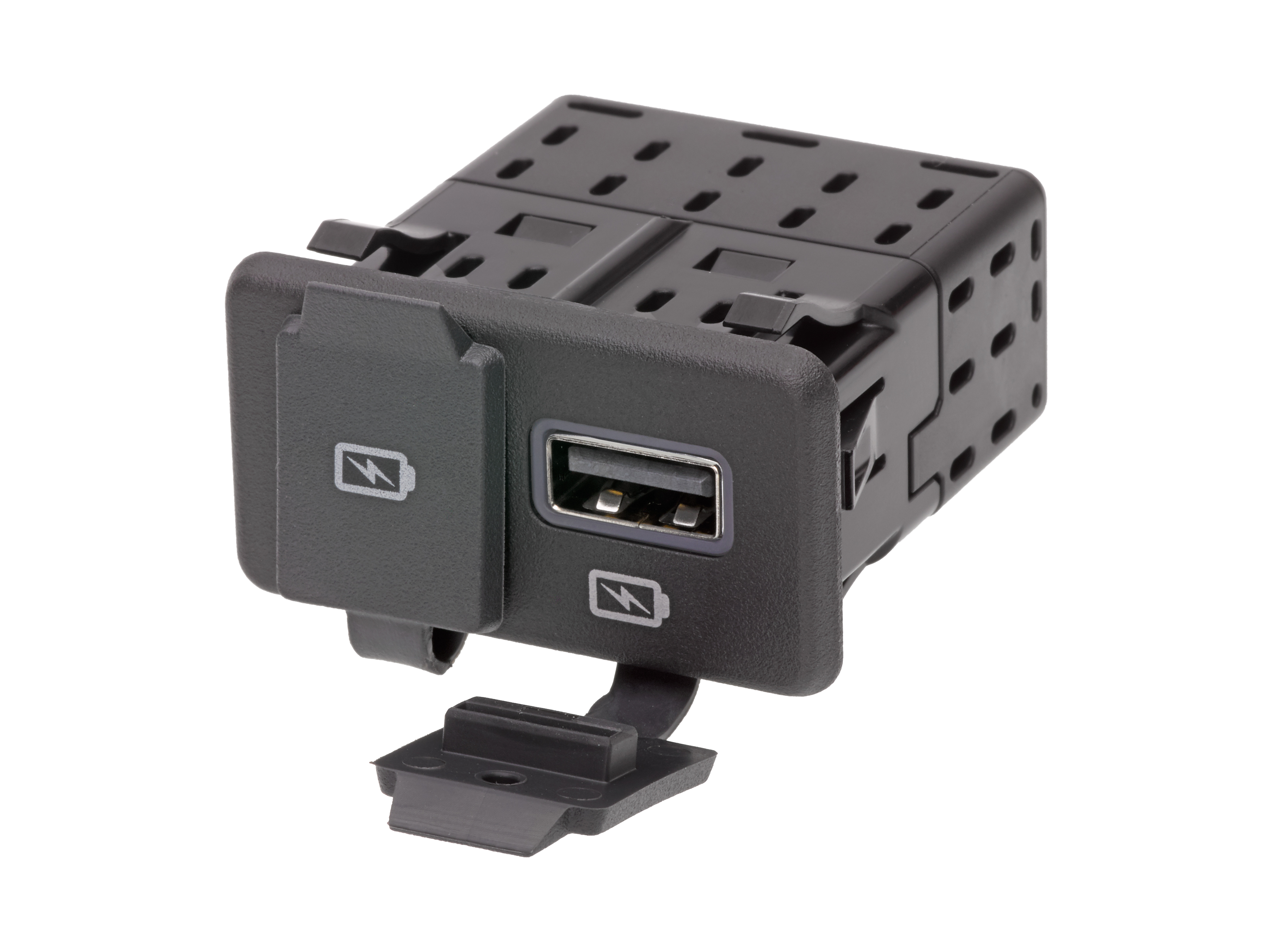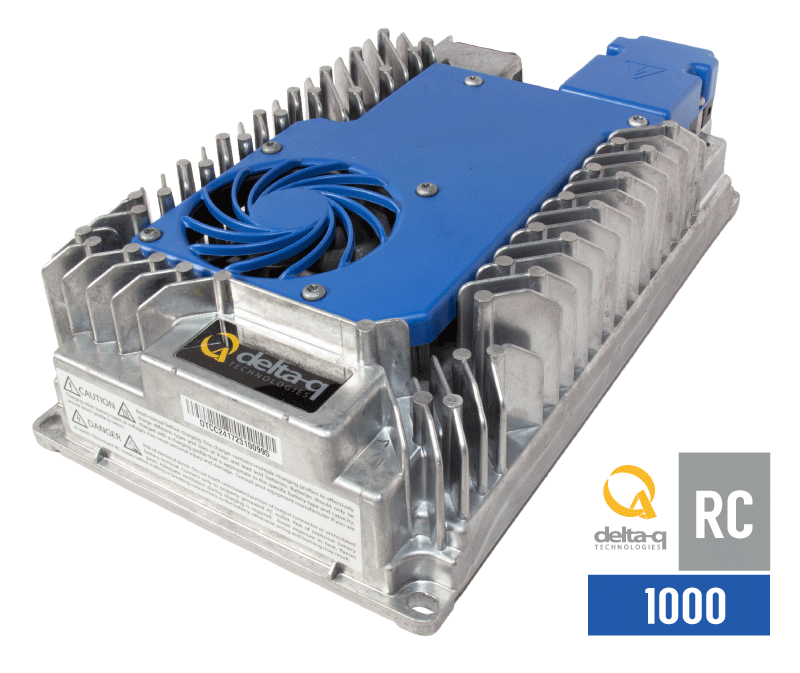By Alix Paultre, contributing writer
Energy storage is a significant enabler for a great many application spaces. Today’s information-based cloud-enabled society runs on batteries. Most industrial systems and all fossil-fuel vehicles use batteries for backup power, and next-generation methods of storing and shifting energy will be a critical aspect of the smart grid. The growth of electric vehicles (EVs) has also created a huge market for large-scale battery charging (Fig. 1 ).

Fig. 1: The growth of electric vehicles has also created a huge market for large-scale battery charging. (Image: Alix Paultre)
These batteries come in a variety of chemistries, form factors, and output voltages but have one common denominator (beyond the obvious one). They all eventually stop delivering power and must be recharged or recycled. Recharging batteries has developed into a major application space with a wide palette of advanced solutions available.
Battery chargers fall broadly into two types: those that are mounted inside the product and those that have separate packaging and are deployed externally. Internal chargers are almost always DC-input devices, and just about every external charger accepts a 110-V or 220-V AC input. The general deployment for a portable device is an internal DC/DC battery charger driven by an external AC/DC power adapter.
On the board
Board-level charging is a very busy space, as every portable electronic device needs onboard power management. The IoT has created a market for a plethora of small single-board RF-capable devices with a button battery in an onboard clip. There are a lot of power management ICs (PMICs) available to manage and recharge that battery, and the performance of the charging circuit has a direct impact on the life and reliability of the battery used.
A battery charge management controller like Microchip Technology’s MCP73830L Li-ion linear charger serves these types of low-charge current applications (Fig. 2 ). Currents as low as 20 mA can be managed with a programmable resistor, and single- and two-cell LiFePO4 batteries can be charged with the MCP738123/213 linear chargers. Most of the controllers are available with thermal regulation, reverse discharge protection, a safety charge timer, and integrated current sensing.

Fig. 2: Microchip’s MCP73830L Li-ion linear charger serves low-charge current applications. (Image: Microchip Technology)
Solutions like the MCP73830 battery charger need to offer features supporting long life, long runtime, and fast charging, such as battery pre-conditioning, programmable charge currents, and end-of-charge thresholds. These features maximize battery capacity, minimize charge time, and extend battery life in the low-component-count, small-area circuits used in portable applications.
For many portable devices, wireless charging is becoming a cost-effective alternative to cables, which also allow device packaging to be seamless without a charger socket. An example of this kind of solution is the Power by Linear LTC4126 from Analog Devices Inc. The LTC4126 provides a wireless charger for Li-ion cells with a high-efficiency multi-mode charge pump DC/DC converter that provides a regulated 1.2-V output at up to 60 mA.
The LTC4126’s 1.2-V charge pump output offers pushbutton on/off control and can directly power the supported product’s ASIC, greatly simplifying the system and reducing the number of external components. The device is suited for space-constrained low-power Li-ion–powered wearables like hearing aids, medical smart patches, and other IoT products.
The device offers input power management circuitry to rectify AC power from a wireless power receiver coil, managing a 2.7-V to 5.5-V input rail to power a constant-current/constant-voltage battery charger. Features include a pin-selectable charge voltage of 4.2 V or 4.35 V, 7.5-mA charge current, automatic recharge, battery temperature monitoring via an NTC pin, and an onboard 6-hour safety charge termination timer. There is also low-battery protection that disconnects the battery from all loads when the voltage drops below 3.0 V. In addition, the charge pump switching frequency is 50 kHz/75 kHz to keep switching noise out of the audible range, useful in audio-related applications such as hearing aids and wireless headsets.
Out of the box
Most products that we think of as external chargers are AC/DC power supplies that feed an internal battery-management PMIC. One of the most popular external power sources for DC-driven devices is the USB port. Some USB systems take wall current and turn it into the 5-Vdc output provided, and some are intended for internal use in a larger system with a higher-voltage internal DC bus.
An example of a DC/DC USB power supply intended for use as an internal subsystem in a vehicle can be found in Molex’s USB modules, which deliver 5 V at 1.5 A and can be deployed at multiple in-vehicle locations (Fig. 3 ). These modules also enable the integration of multiple I/O port connection types such as USB, HDMI, Ethernet, SD memory cards, auxiliary jack inputs, and more to meet end-system requirements in either active or passive designs.

Fig. 3: Molex’s USB modules can be deployed at multiple in-vehicle locations. (Image: Molex)
The pre-assembled active USB charger is compliant with Battery Charging 1.2 standards and is designed to fit in existing rocker-switch panels in vehicles to facilitate drop-in design. The products are tested for electrical, mechanical, environmental, electromagnetic interference (EMI), electrostatic discharge (ESD), and signal integrity. These products save time and money with full turn-key testing and product validation. Compatible with most in-vehicle 12-V power distribution architectures, the modules provide a relatively simple way to integrate USB and other portable-device I/O and power interfaces into a vehicle.
When it comes to EVs, there is more to the space than just cars. There are a lot of smaller EVs used in industrial facilities and outdoor applications. To serve applications like these, the RC1000 from Delta-Q Technologies, as an example, is a high-frequency charging solution capable of charging both lead-acid and Li-ion batteries (Fig. 4 ). The new charger also offers controller area network (CAN bus) communications, such as CANopen and SAE J1939, for seamless machine integration.

Fig. 4: The RC1000 from Delta-Q is a high frequency charging solution capable of charging both lead-acid and Li-ion batteries. (Image: Delta-Q)
Designed with original equipment manufacturers in mind, the RC1000 is suitable for use in applications such as battery-powered floor care machines, outdoor power equipment, and utility vehicles. Similar to its family series, the RC1000 has an IP66-rated ingress protection to seal out dirt and fluids, while its mechanical design and component selection resist vibration, shock, and temperature extremes.
Looking ahead
Battery-driven systems will continue to expand and develop as a core technology enabling our digitally empowered cloud-enabled future. These advanced batteries will always require sophisticated charging and management systems to provide optimum value to the user. Selecting the best charging solution for your design will pay off in major performance and reliability gains in your products.
Advertisement
Learn more about Electronic Products Magazine





